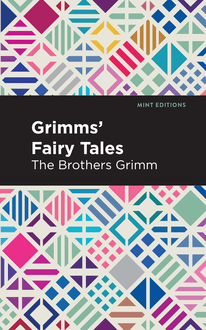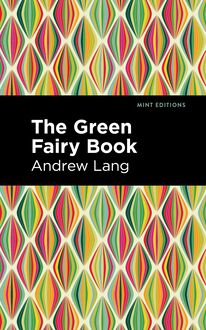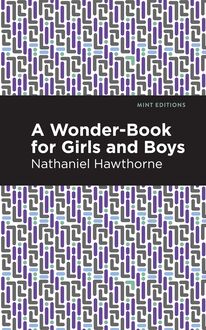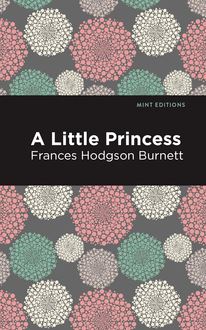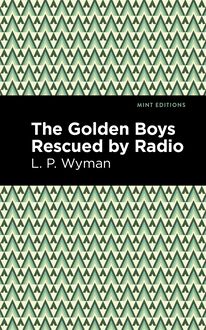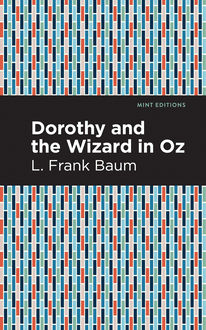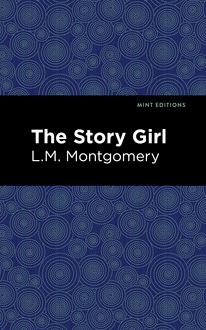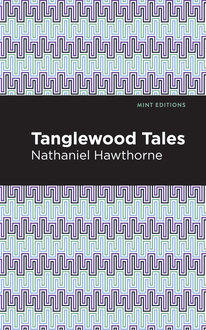-
 Univers
Univers
-
 Ebooks
Ebooks
-
 Livres audio
Livres audio
-
 Presse
Presse
-
 Podcasts
Podcasts
-
 BD
BD
-
 Documents
Documents
-
- Cours
- Révisions
- Ressources pédagogiques
- Sciences de l’éducation
- Manuels scolaires
- Langues
- Travaux de classe
- Annales de BEP
- Etudes supérieures
- Maternelle et primaire
- Fiches de lecture
- Orientation scolaire
- Méthodologie
- Corrigés de devoir
- Annales d’examens et concours
- Annales du bac
- Annales du brevet
- Rapports de stage
La lecture à portée de main
Vous pourrez modifier la taille du texte de cet ouvrage
Découvre YouScribe en t'inscrivant gratuitement
Je m'inscrisDécouvre YouScribe en t'inscrivant gratuitement
Je m'inscrisEn savoir plus
Vous pourrez modifier la taille du texte de cet ouvrage
En savoir plus

Description
The Green Fairy Book is a notable addition to Andrew Lang’s collection of children’s literature with international stories that include both Chinese and Spanish fables. It’s a delightful selection of the genre’s most memorable tales. Originally published in 1892, Andrew Lang combines a premier collection of children’s stories for The Green Fairy Book. Similar to his previous entries, this version features tales that have been passed down from generation to generation. Some of them include “The Blue Bird,” “The Enchanted Watch,” Little One-Eye, Little Two-Eyes, And Little Three-Eyes,” as well as “The Three Little Pigs and “The Three Bears.” This is a vibrant retelling of classic fairy tales that continue to stand the test of time. Andrew Lang is best known for his impressive series of children’s fables. The Green Fairy Book helped solidify his place a master storyteller in the juvenile genre. His compelling prose and vivid imagery make this collection a standout amongst its peers. With an eye-catching new cover, and professionally typeset manuscript, this edition of The Green Fairy Book is both modern and readable.
Sujets
Informations
| Publié par | Mint Editions |
| Date de parution | 08 juin 2021 |
| Nombre de lectures | 0 |
| EAN13 | 9781513286617 |
| Langue | English |
| Poids de l'ouvrage | 2 Mo |
Informations légales : prix de location à la page 0,0500€. Cette information est donnée uniquement à titre indicatif conformément à la législation en vigueur.
Extrait
The Green Fairy Book
Andrew Lang
The Green Fairy Book was first published in 1892.
This edition published by Mint Editions 2021.
ISBN 9781513281599 | E-ISBN 9781513286617
Published by Mint Editions®
minteditionbooks.com
Publishing Director: Jennifer Newens
Design & Production: Rachel Lopez Metzger
Project Manager: Micaela Clark
Typesetting: Westchester Publishing Services
C ONTENTS T HE B LUE B IRD T HE H ALF -C HICK T HE S TORY OF C ALIPH S TORK T HE E NCHANTED W ATCH R OSANELLA S YLVAIN AND J OCOSA T HE Y ELLOW B IRD F AIRY G IFTS P RINCE N ARCISSUS AND THE P RINCESS P OTENTILLA P RINCE F EATHERHEAD AND THE P RINCESS C ELANDINE T HE T HREE L ITTLE P IGS H EART OF I CE T HE E NCHANTED R ING T HE S NUFF -B OX T HE G OLDEN B LACKBIRD T HE L ITTLE S OLDIER T HE M AGIC S WAN T HE D IRTY S HEPHERDESS T HE E NCHANTED S NAKE T HE B ITER B IT K ING K OJATA (F ROM THE R USSIAN ) P RINCE F ICKLE AND F AIR H ELENA (F ROM THE G ERMAN ) P UDDOCKY (F ROM THE G ERMAN ) T HE S TORY OF H OK L EE AND THE D WARFS T HE S TORY OF THE T HREE B EARS P RINCE V IVIEN AND THE P RINCESS P LACIDA L ITTLE O NE -E YE , L ITTLE T WO -E YES , AND L ITTLE T HREE -E YES J ORINDE AND J ORINGEL A LLERLEIRAUH ; O R , THE M ANY -F URRED C REATURE T HE T WELVE H UNTSMEN S PINDLE , S HUTTLE , AND N EEDLE T HE C RYSTAL C OFFIN T HE T HREE S NAKE -L EAVES T HE R IDDLE J ACK M Y H EDGEHOG T HE G OLDEN L ADS T HE W HITE S NAKE T HE S TORY OF A C LEVER T AILOR T HE G OLDEN M ERMAID T HE W AR OF THE W OLF AND THE F OX T HE S TORY OF THE F ISHERMAN AND H IS W IFE T HE T HREE M USICIANS T HE T HREE D OGS
To The Friendly Reader
This is the third, and probably the last, of the Fairy Books of many colours. First there was the Blue Fairy Book ; then, children, you asked for more, and we made up the Red Fairy Book ; and, when you wanted more still, the Green Fairy Book was put together. The stories in all the books are borrowed from many countries; some are French, some German, some Russian, some Italian, some Scottish, some English, one Chinese. However much these nations differ about trifles, they all agree in liking fairy tales. The reason, no doubt, is that men were much like children in their minds long ago, long, long ago, and so before they took to writing newspapers, and sermons, and novels, and long poems, they told each other stories, such as you read in the fairy books. They believed that witches could turn people into beasts, that beasts could speak, that magic rings could make their owners invisible, and all the other wonders in the stories. Then, as the world became grown-up, the fairy tales which were not written down would have been quite forgotten but that the old grannies remembered them, and told them to the little grandchildren: and when they, in their turn, became grannies, they remembered them, and told them also. In this way these tales are older than reading and writing, far older than printing. The oldest fairy tales ever written down were written down in Egypt, about Joseph’s time, nearly three thousand five hundred years ago. Other fairy stories Homer knew, in Greece, nearly three thousand years ago, and he made them all up into a poem, the Odyssey , which I hope you will read some day. Here you will find the witch who turns men into swine, and the man who bores out the big foolish giant’s eye, and the cap of darkness, and the shoes of swiftness, that were worn later by Jack the Giant-Killer. These fairy tales are the oldest stories in the world, and as they were first made by men who were childlike for their own amusement, so they amuse children still, and also grown-up people who have not forgotten how they once were children.
Some of the stories were made, no doubt, not only to amuse, but to teach goodness. You see, in the tales, how the boy who is kind to beasts, and polite, and generous, and brave, always comes best through his trials, and no doubt these tales were meant to make their hearers kind, unselfish, courteous, and courageous. This is the moral of them. But, after all, we think more as we read them of the diversion than of the lesson. There are grown-up people now who say that the stories are not good for children, because they are not true, because there are no witches, nor talking beasts, and because people are killed in them, especially wicked giants. But probably you who read the tales know very well how much is true and how much is only make-believe, and I never yet heard of a child who killed a very tall man merely because Jack killed the giants, or who was unkind to his stepmother, if he had one, because, in fairy tales, the stepmother is often disagreeable. If there are frightful monsters in fairy tales, they do not frighten you now, because that kind of monster is no longer going about the world, whatever he may have done long, long ago. He has been turned into stone, and you may see his remains in museums. Therefore, I am not afraid that you will be afraid of the magicians and dragons; besides, you see that a really brave boy or girl was always their master, even in the height of their power.
Some of the tales here, like The Half-Chick , are for very little children; others for older ones. The longest tales, like Heart of Ice , were not invented when the others were, but were written in French, by clever men and women, such as Madame d’Aulnoy, and the Count de Caylus, about two hundred years ago. There are not many people now, perhaps there are none, who can write really good fairy tales, because they do not believe enough in their own stories, and because they want to be wittier than it has pleased Heaven to make them.
So here we give you the last of the old stories, for the present, and hope you will like them, and feel grateful to the Brothers Grimm, who took them down from the telling of old women, and to M. S é billot and M. Charles Marelles, who have lent us some tales from their own French people, and to Mr. Ford, who drew the pictures, and to the ladies, Miss Blackley, Miss Alma Alleyne, Miss Eleanor Sellar, Miss May Sellar, Miss Wright, and Mrs. Lang, who translated many of the tales out of French, German, and other languages.
If we have a book for you next year, it shall not be a fairy book. What it is to be is a secret, but we hope that it will not be dull. So good-bye, and when you have read a fairy book, lend it to other children who have none, or tell them the stories in your own way, which is a very pleasant mode of passing the time.
T HE B LUE B IRD
Once upon a time there lived a King who was immensely rich. He had broad lands, and sacks overflowing with gold and silver; but he did not care a bit for all his riches, because the Queen, his wife, was dead. He shut himself up in a little room and knocked his head against the walls for grief, until his courtiers were really afraid that he would hurt himself. So they hung feather-beds between the tapestry and the walls, and then he could go on knocking his head as long as it was any consolation to him without coming to much harm. All his subjects came to see him, and said whatever they thought would comfort him: some were grave, even gloomy with him; and some agreeable, even gay; but not one could make the least impression upon him. Indeed, he hardly seemed to hear what they said. At last came a lady who was wrapped in a black mantle, and seemed to be in the deepest grief. She wept and sobbed until even the King’s attention was attracted; and when she said that, far from coming to try and diminish his grief, she, who had just lost a good husband, was come to add her tears to his, since she knew what he must be feeling, the King redoubled his lamentations. Then he told the sorrowful lady long stories about the good qualities of his departed Queen, and she in her turn recounted all the virtues of her departed husband; and this passed the time so agreeably that the King quite forgot to thump his head against the feather-beds, and the lady did not need to wipe the tears from her great blue eyes as often as before. By degrees they came to talking about other things in which the King took an interest, and in a wonderfully short time the whole kingdom was astonished by the news that the King was married again to the sorrowful lady.
Now the King had one daughter, who was just fifteen years old. Her name was Fiordelisa, and she was the prettiest and most charming Princess imaginable, always gay and merry. The new Queen, who also had a daughter, very soon sent for her to come to the Palace. Turritella, for that was her name, had been brought up by her godmother, the Fairy Mazilla, but in spite of all the care bestowed upon her, she was neither beautiful nor gracious. Indeed, when the Queen saw how ill-tempered and ugly she appeared beside Fiordelisa she was in despair, and did everything in her power to turn the King against his own daughter, in the hope that he might take a fancy to Turritella. One day the King said that it was time Fiordelisa and Turritella were married, so he would give one of them to the first suitable Prince who visited his Court. The Queen answered:
“My daughter certainly ought to be the first to be married; she is older than yours, and a thousand times more charming!”
The King, who hated disputes, said, “Very well, it’s no affair of mine, settle it your own way.”
Very soon after came the news that King Charming, who was the most handsome and magnificent Prince in all the country round, was on his way to visit the King. As soon as the Queen heard this, she set all her jewellers, tailors, weavers, and embroiderers to work upon splendid dresses and ornaments for Turritella, but she told the King that Fiordelisa had no need of anything new, and the night before the King was to arrive, she bribed her waiting woman to steal away all the Princess’s own dresses and jewels, so that when the day came, and Fiordelisa wished to adorn herself as became her high rank, not even a ribbon could she fi
-
 Univers
Univers
-
 Ebooks
Ebooks
-
 Livres audio
Livres audio
-
 Presse
Presse
-
 Podcasts
Podcasts
-
 BD
BD
-
 Documents
Documents
-
Jeunesse
-
Littérature
-
Ressources professionnelles
-
Santé et bien-être
-
Savoirs
-
Education
-
Loisirs et hobbies
-
Art, musique et cinéma
-
Actualité et débat de société
-
Jeunesse
-
Littérature
-
Ressources professionnelles
-
Santé et bien-être
-
Savoirs
-
Education
-
Loisirs et hobbies
-
Art, musique et cinéma
-
Actualité et débat de société
-
Actualités
-
Lifestyle
-
Presse jeunesse
-
Presse professionnelle
-
Pratique
-
Presse sportive
-
Presse internationale
-
Culture & Médias
-
Action et Aventures
-
Science-fiction et Fantasy
-
Société
-
Jeunesse
-
Littérature
-
Ressources professionnelles
-
Santé et bien-être
-
Savoirs
-
Education
-
Loisirs et hobbies
-
Art, musique et cinéma
-
Actualité et débat de société
- Cours
- Révisions
- Ressources pédagogiques
- Sciences de l’éducation
- Manuels scolaires
- Langues
- Travaux de classe
- Annales de BEP
- Etudes supérieures
- Maternelle et primaire
- Fiches de lecture
- Orientation scolaire
- Méthodologie
- Corrigés de devoir
- Annales d’examens et concours
- Annales du bac
- Annales du brevet
- Rapports de stage
